How to File a Roofing Insurance Claim After a Storm – A Step-by-Step Guide
June 17, 2025
When a major storm rolls through
Florida or
Ohio, your first thought is likely about keeping your family safe — but once the skies clear, your next priority should be checking your home for damage. Roofing issues are some of the most common (and costly) storm-related repairs, and the good news is your homeowner’s insurance may help cover the costs. Filing a roofing insurance claim can feel overwhelming, especially when you’re already dealing with stress after a storm. That’s why we’ve put together this step-by-step guide to help you navigate the process with confidence — and get your home back to pre-storm condition as quickly as possible.
Step 1: Inspect Your Roof for Visible Damage
Start with a visual inspection. You don’t need to climb up on the roof — in fact, we recommend you don’t. From the ground (or with binoculars), look for:
- Missing or curled shingles
- Dents in metal flashing or gutters
- Granule loss or bald spots on shingles
- Pieces of shingles or roofing debris in your yard
- Water stains on ceilings or in the attic
Step 2: Document Everything
Take clear, dated photos of any damage you notice — and if it’s safe, get interior shots of leaks, water stains, or ceiling damage. The more evidence you have, the stronger your claim will be.
Pro tip:
Snap photos from multiple angles and save them in a digital folder titled by storm date. This makes it easy to submit to your insurance provider later.
Step 3: Contact a Local Roofing Company for an Inspection
Before calling your insurance company, have a reputable roofing contractor (like Allstate Exteriors 😉) perform a free storm damage inspection. This ensures:
- You know exactly what damage was caused by the storm
- You’re not relying solely on the insurance adjuster’s findings
- You have a written inspection report and estimate for repairs
A
good roofing company will also walk you through the insurance claim process — and in many cases, even meet with your adjuster to make sure nothing is missed.
Step 4: File the Claim with Your Insurance Provider
Once you’ve confirmed there’s storm-related damage, it’s time to officially file your claim. Most providers allow you to do this: Online via your insurance portal, through a mobile app, or by calling their claims department.
Be prepared to provide:
- Your policy number
- Date and time of the storm
- A general description of the damage
- Photos and inspection report (if available)
After filing, the insurance company will schedule an adjuster to inspect the damage in person. It’s crucial that your roofing contractor is there too. This helps:
- Advocate for all damage to be noted
- Prevent missed or overlooked issues
- Ensure you get a fair, full estimate for repair or replacement
At
Allstate Exteriors, we meet adjusters on-site to represent your best interest — so nothing falls through the cracks.
Step 6: Review the Insurance Estimate
Once the adjuster completes their report, you’ll receive a damage estimate and coverage breakdown. This will include: What’s covered and what’s not, your deductible amount, and the total payout you’ll receive.
If something seems off or missing, your contractor can help you supplement the claim with additional documentation.
Step 7: Schedule the Repairs
After approval, you’re free to move forward! Choose a licensed and insured roofing company to complete the repairs or replacement. Keep all invoices and receipts — your insurance provider may need them for final reimbursement.
*Bonus Tip: Keep Records of Everything*
From emails and texts to photos and receipts, hold onto all communication throughout the claims process. This protects you in case of disputes or delays.
Dealing with storm damage can be stressful, but filing a roofing insurance claim doesn’t have to be. With the right steps (and the right roofing partner), you can restore your home quickly and confidently.
Whether you’re facing hurricane aftermath in Florida or hail damage in Ohio,
our team at Allstate Exteriors is here to help. We’ve worked with countless homeowners through the insurance process — and we’re happy to do the same for you.
Need a free storm damage inspection?
Schedule yours today and let us handle the hard part.
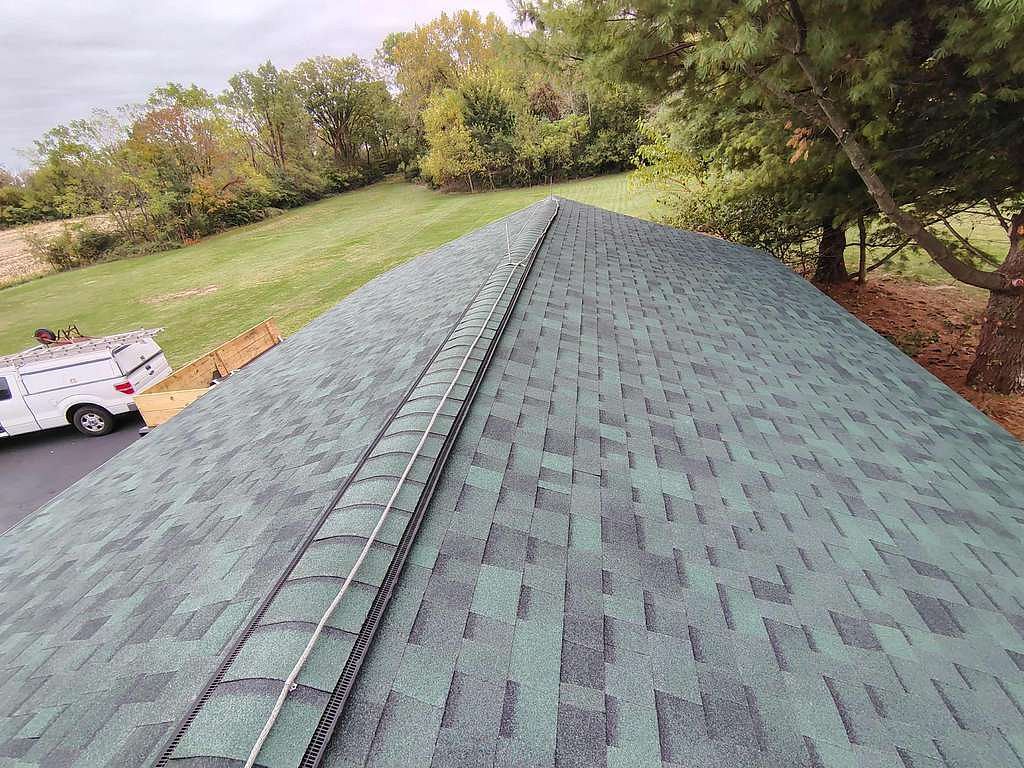
Your roof is one of the biggest investments you’ll ever make and choosing the right contractor can feel overwhelming. With so many companies promising “the best price” or “fastest install,” how can you tell who’s legit and who’s cutting corners? At Allstate Exteriors, we’ve seen it all — from honest bids to misleading quotes that cost homeowners thousands later. Here’s how to read between the lines and spot red flags in a roofing estimate before you sign anything. 💡 Quick Answer: A trustworthy roofing estimate should be detailed , transparent, and backed by credentials . Red flags include vague pricing, missing warranty information, no proof of insurance, or high-pressure sales tactics. If it sounds too good to be true.. it probably is. 🚩 Red Flag #1: Vague or One-Line Estimates You Deserve Details If an estimate simply says “Roof replacement – $12,000,” that’s a problem. A professional roofer breaks down: Materials (brand, type, and quantity) Labor costs Tear-off and disposal fees Ventilation or flashing updates Warranty coverage Without that transparency, you have no idea what you’re actually paying for or what corners might be cut. 🚩 Red Flag #2: No Proof of Insurance or Licensing Always Ask Before Signing Any reputable roofing company should gladly show proof of: Liability insurance (covers property damage) Workers’ comp insurance (protects you if a worker gets injured) State or local licensing If a company hesitates or avoids the question, walk away . At Allstate Exteriors, we carry full insurance and are certified Owens Corning Platinum Preferred Contractors — which means we meet strict industry standards that less than 1% of roofers achieve. 🚩 Red Flag #3: Unbelievably Low Prices Cheap Often Means Costly Later Some contractors underbid just to win the job then use sub-par materials or unskilled labor to stay profitable. That can lead to leaks, voided warranties, and early roof failure. Pro Tip: If one estimate is way lower than all others, compare the material quality and warranty coverage — not just the price tag. 🚩 Red Flag #4: High-Pressure Sales Tactics “Sign Today or Lose the Deal” = Red Flag Honest roofers don’t rush you. If a contractor pressures you to sign the same day, demands cash only, or claims the “discount expires tonight,” that’s a red flag. Good roofing companies know a roof replacement is a big decision — and they’ll take the time to answer your questions, show samples, and let you think it through. 🚩 Red Flag #5: No Mention of Warranty A Roof Is Only as Good as Its Warranty If the estimate doesn’t clearly explain product and workmanship warranties, ask immediately. Quality materials like Owens Corning Duration Flex shingles come with industry-leading warranties — but they only stay valid if installed by certified contractors like Allstate Exteriors. What a Good Roofing Estimate Should Include A Quick Checklist for Homeowners ✅ Company name, license, and insurance info ✅ Detailed material list and quantities ✅ Start and completion dates ✅ Cleanup/disposal plan ✅ Payment schedule (never 100% upfront!) ✅ Warranty terms and coverage When your estimate includes all these details, you can move forward confidently knowing you’re getting what you pay for. The Bottom Line The right roofing company will never hide information, pressure you, or promise unrealistic results. Transparency, communication, and credentials are what separate professionals from pretenders. 📞 Get a Free, Honest Estimate from Allstate Exteriors Ready for a second opinion on your roofing estimate? Let Allstate Exteriors take a look. We’ll walk you through your options, explain every cost clearly, and make sure you feel comfortable from start to finish.
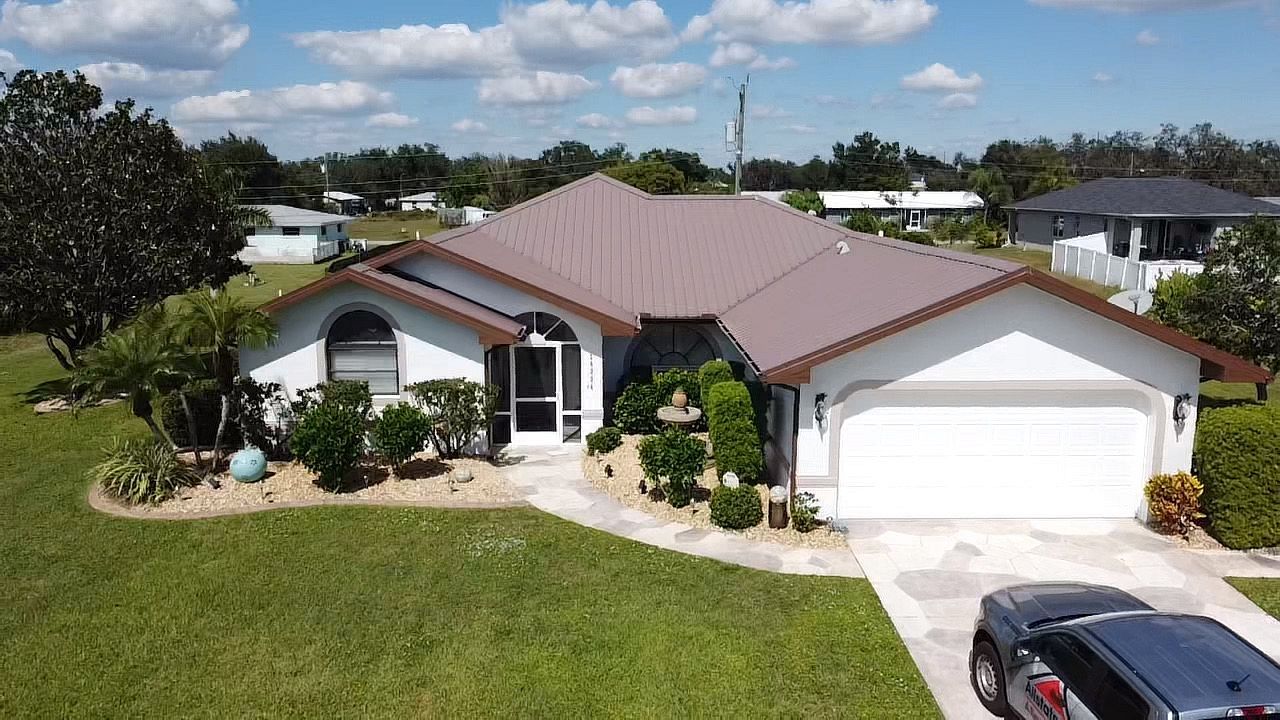
Florida homeowners know their roofs take a beating year-round. Between scorching UV rays, high humidity, tropical storms, and salty coastal air, your roof faces some of the harshest conditions in the country. Over time, those elements can cause costly damage if not properly maintained. Below, our experts at Allstate Exteriors break down the most common roof problems in Florida homes — and more importantly, how to prevent them before they turn into bigger issues. 1. Heat and Sun Damage Florida roofs endure intense UV exposure almost every day. Over time, constant sunlight can cause shingles to crack, curl, and lose their granules, reducing their ability to protect your home. Signs of sun damage: Shingles look faded or brittle Granules collecting in your gutters Roof feels extremely hot to the touch Prevention tips: Choose UV-resistant roofing materials like Owens Corning Duration FLEX shingles or metal roofing Schedule annual roof inspections to spot deterioration early Apply reflective coatings to reduce surface temperature 2. Roof Leaks and Water Intrusion Heavy rain is part of life in Florida. When flashing, underlayment, or seals around vents and chimneys fail, water can find its way into your attic and walls. Signs of roof leaks: Ceiling stains or sagging drywall Musty odors or visible mold Water spots near vents or skylights Prevention tips: Have a professional inspection after every major storm Keep gutters clean to prevent water backup Repair cracked caulking or flashing as soon as it’s noticed 3. Wind and Hurricane Damage High winds during Florida’s storm season can lift shingles, tear off flashing, or even expose the roof deck. Once wind gets under your shingles, your roof’s waterproofing is compromised. Prevention tips: Install wind-rated shingles that meet Florida Building Code standards Ensure your roofing nails and fasteners meet manufacturer and code requirements Schedule a post-hurricane inspection with a licensed contractor 4. Mold, Mildew, and Algae Growth Florida’s humid climate creates a breeding ground for algae and mildew — especially on north-facing or shaded roofs. Those dark streaks you see? That’s roof algae, and it can shorten the lifespan of your shingles. Prevention tips: Choose algae-resistant shingles with copper or zinc granules Trim overhanging trees to increase sunlight and airflow Schedule regular roof cleanings (avoid pressure washing!) 5. Poor Installation or Cheap Materials Unfortunately, after every hurricane, “storm chasers” and unlicensed contractors flood into Florida offering cheap roof replacements. Poor workmanship and low-quality materials can lead to leaks, early failure, and voided warranties. Prevention tips: Hire a licensed Florida roofing contractor with strong reviews and credentials (BTW..Allstate Exteriors has a 4.9 rating with thousands of google reviews!) Ask about Owens Corning Platinum Preferred or other certified partnerships Verify warranties and get all details in writing 6. Failing Flashing and Sealants Flashing around chimneys, skylights, and vents is one of the first areas to fail in Florida’s heat. When sealants crack, leaks begin. Prevention tips: Inspect flashing every 6 months Re-seal with roofing-grade caulk or have it replaced if corroded Keep an eye on roof penetrations after every storm How to Prevent Roof Problems in Florida Year-Round The best way to protect your home — and your wallet — is proactive maintenance. Here’s what our Allstate Exteriors pros recommend: ✅ Schedule a professional roof inspection twice a year (spring + fall) ✅ Clean gutters and downspouts before hurricane season ✅ Trim branches and clear debris after storms ✅ Keep attic ventilation open to prevent trapped moisture ✅ Use impact-resistant materials for future replacements 🏡 Final Thoughts Florida’s unique climate demands extra care for your roof — but prevention always costs less than repair. With routine maintenance, quality materials, and an experienced contractor, you can extend your roof’s life for decades. If you’re in Cape Coral, Orlando, or Palm Bay, the Allstate Exteriors Florida team is here to help. We’re Owens Corning Platinum Preferred Contractors (top 1% nationwide) and proud to keep Florida homes protected from the elements.
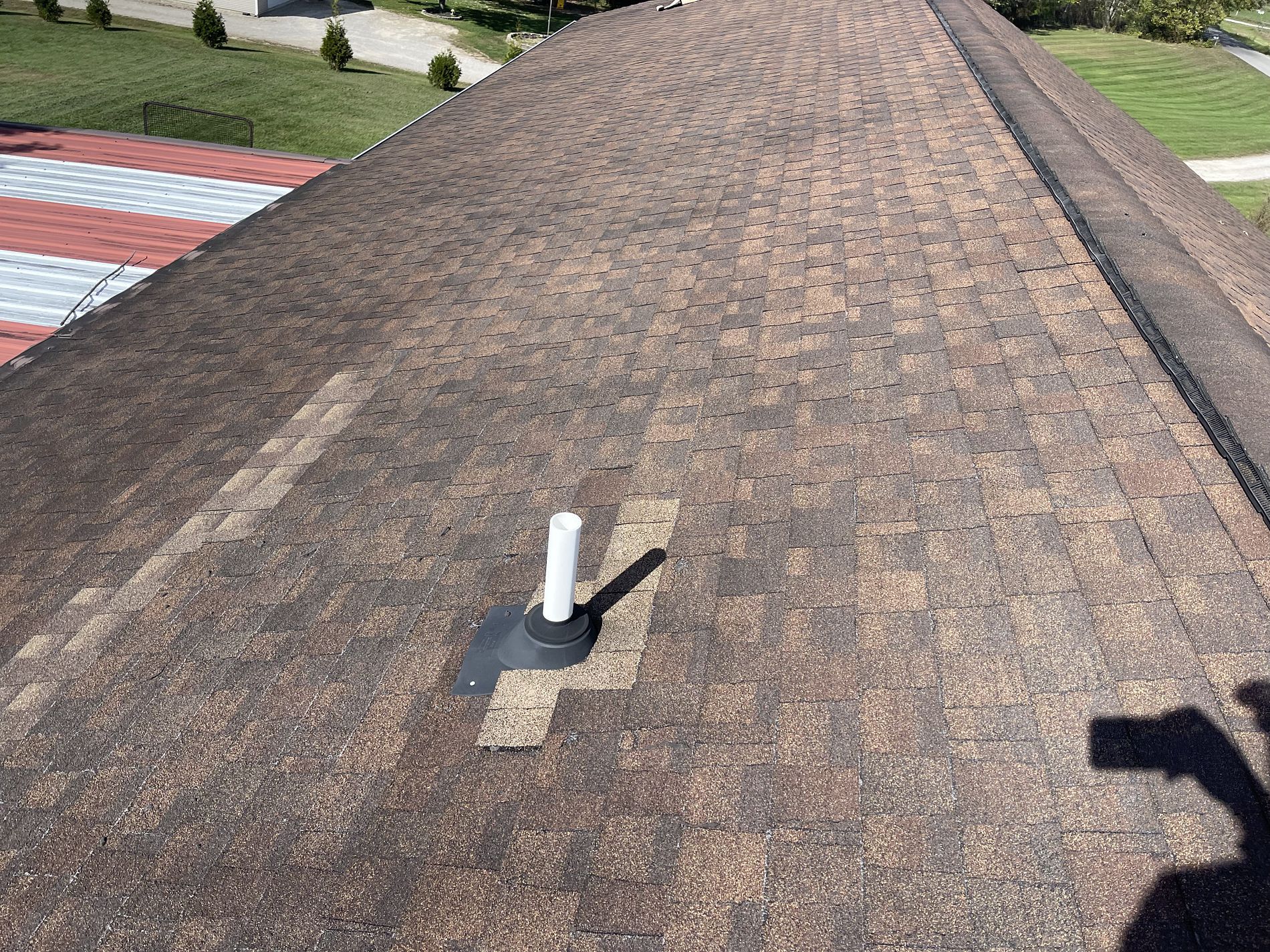
After a storm hits, it’s natural to glance up at your roof and wonder — “Did that do any real damage, or is it just aging?” It’s a question our team at Allstate Exteriors hears all the time. Knowing the difference between storm damage and normal wear and tear can determine whether you file an insurance claim or simply plan for future maintenance. Let’s break it down clearly - 💡 Quick Answer: Storm damage is sudden, unexpected, and caused by a specific event (like wind, hail, or falling debris). Wear and tear happens gradually over time from everyday exposure to sun, rain, and temperature changes. If your roof’s condition changed overnight after severe weather — that’s storm damage. If it’s slowly deteriorated over years — that’s normal aging. What Counts as Storm Damage? The Telltale Signs of Storm-Related Roof Damage Storm damage is typically sudden and uneven, meaning it affects certain areas more than others. Here’s what we look for during an inspection: Missing or lifted shingles: High winds can break the seal and tear shingles completely off. Granule loss in random patches: Hail impact can knock granules loose, leaving dark or bare spots. Cracked or bruised shingles: Hail can bruise asphalt shingles, making them soft or pitted. Dented flashing, vents, or gutters: Clear sign of hail or debris impact. Leaks appearing shortly after a storm: Water intrusion from wind-driven rain or torn shingles. These types of damage can compromise your roof’s protective layers, even if they’re not immediately visible from the ground. Pro Tip: Always document storm damage with photos and schedule a professional inspection before filing an insurance claim — insurers often require proof tied to a specific weather event. What’s Considered Normal Wear and Tear? How Aging Naturally Affects Your Roof Even the best roofs age. Exposure to the sun, seasonal temperature swings, and years of wind and rain gradually cause minor changes that are not covered by insurance. Common examples include: Faded shingle color or surface granule loss Small cracks or curling edges from UV exposure Moss or algae growth Nail pops or minor sealant wear around flashing Slight sagging from years of weight and moisture cycles These are maintenance issues, not sudden damage — and while they can lead to bigger problems down the road, they typically signal it’s time for upkeep or eventual replacement, not a claim. Why the Difference Matters Insurance Coverage Depends on the Cause Insurance companies only cover sudden, accidental events — meaning storm damage. Normal wear and tear falls under homeowner responsibility. That’s why accurate documentation and professional evaluation matter so much. At Allstate Exteriors, our trained inspectors know exactly how to tell the difference. We’ll identify: The age of the damage (fresh vs. old) The pattern of impact (random vs. consistent) Whether the issue was caused by wind, hail, or improper installation That distinction could be the difference between an approved claim or an out-of-pocket repair. Local Conditions in Ohio & Florida Weather Patterns That Affect Roofs Differently Ohio: Hail, heavy snow, and freeze-thaw cycles cause shingle cracking and granule loss. Florida: High winds, hurricanes, and salt air break down sealants and lift shingles faster. Knowing your local climate risks helps you spot the difference between long-term wear and true storm damage. The Bottom Line: Storm damage happens fast and usually leaves visible clues. Normal wear and tear creeps in over time. Either way, ignoring changes can shorten your roof’s life and void your manufacturer’s warranty. When in doubt, call the pros. One free inspection from Allstate Exteriors can tell you exactly what’s going on — no guessing, no pressure. Schedule Your Free Storm Damage Inspection
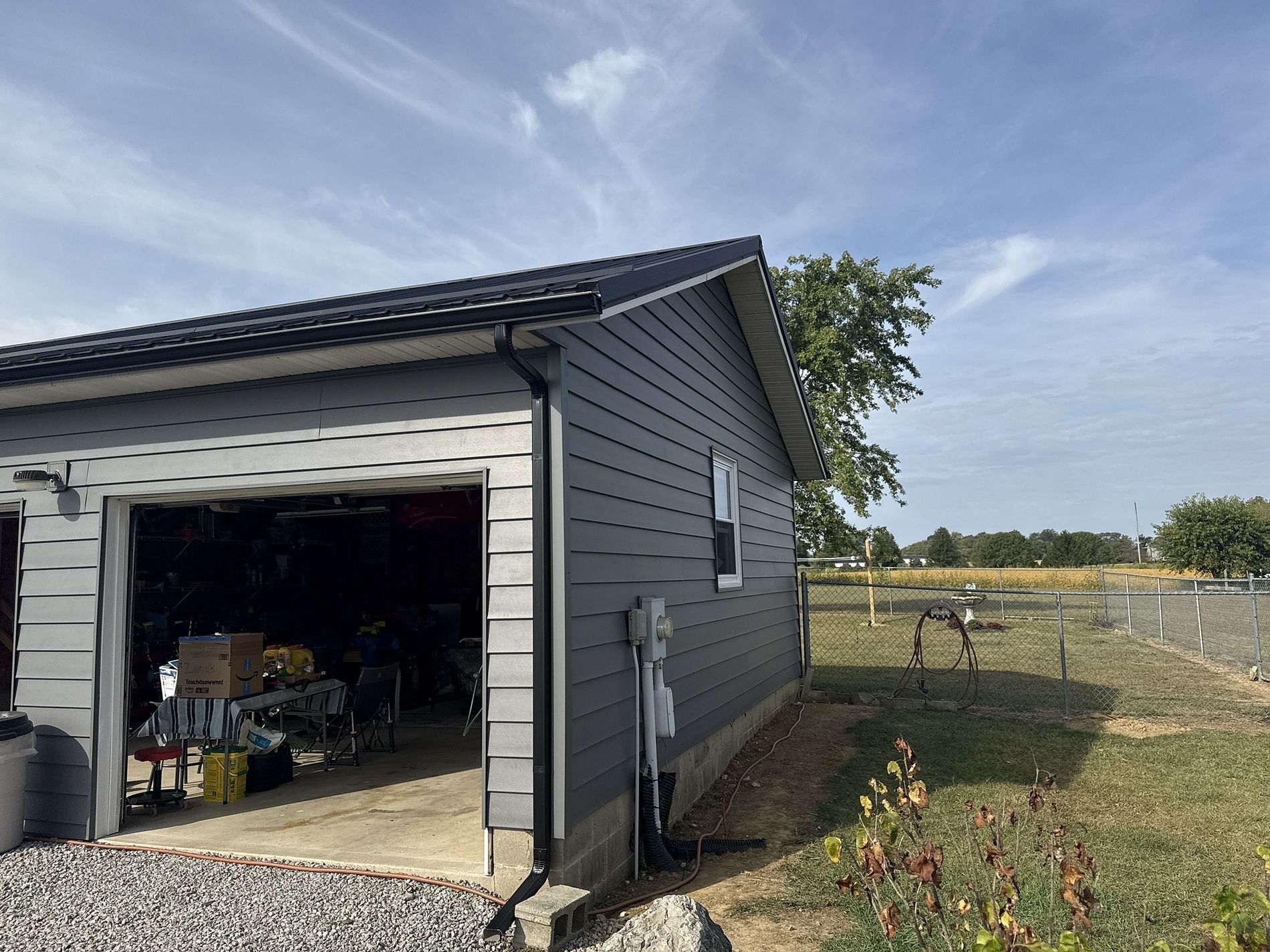
When most people think about their roof, they don’t usually think about their gutters. But truth is — your gutters are one of the hardest working parts of your home’s exterior. They may not be the most glamorous feature, but they play a major role in keeping your roof, siding, and foundation safe from costly water damage. At Allstate Exteriors, we’ve seen firsthand what happens when gutters are clogged, damaged, or missing altogether — and it’s never pretty. So, let’s break down why gutters are so important and what their purpose really is. What Do Gutters Actually Do? Gutters are designed to channel rainwater away from your home. When rain hits your roof, it flows down to the edge. Without gutters, that water would pour directly off your roof and pool around your foundation, seep into your siding, or wash away landscaping. Properly installed gutters: Collect rainwater running off your roof Direct it into downspouts Carry that water safely away from your home’s base That simple process helps protect nearly every major part of your home — from the roof deck to the basement. Why Gutters Are So Important Here’s what happens when your gutters are doing their job (and what can go wrong when they’re not). 1. They Protect Your Roof and Fascia Gutters help keep water from backing up under your shingles. When debris builds up and clogs your gutters, water can overflow and soak into the fascia board (the area right under your roofline). Over time, that causes rot and can even lead to roof leaks. 2. They Prevent Foundation Damage Pooling water around your home’s base is one of the biggest causes of foundation cracks and settling. Gutters move that water away before it can soak into the ground near your foundation. This is especially important here in Ohio and Florida , where heavy rain can come down fast and flood-prone areas are common. 3. They Protect Siding and Windows Without gutters, rainwater running off the roof can streak down your siding and windows, leading to stains, wood rot, and even interior water leaks. Gutters prevent that by controlling where the water goes — and keeping it away from your walls. 4. They Help Prevent Soil Erosion and Landscape Damage Ever notice dirt splashing up on your home after a heavy rain? That’s from water falling straight off the roof. Over time, this erodes soil and destroys mulch, grass, or flower beds. Gutters and downspouts control the flow of water so your landscaping stays beautiful. 5. They Reduce Mold and Mildew Growth When water constantly sits near your home, it creates the perfect environment for mold and mildew. Proper drainage prevents that moisture buildup and keeps your home cleaner and healthier. Signs Your Gutters Might Need Attention Not sure if your gutters are still doing their job? Here are a few red flags to watch for: Water spilling over the sides during rain Peeling paint or rot on your fascia or soffit Sagging or pulling gutters Puddles forming near your foundation Cracks in your foundation or basement walls Rust or visible holes in gutter sections If you spot any of these, it’s time for a gutter repair or gutter replacement before it leads to more serious damage. Gutter Systems That Work Best At Allstate Exteriors, we install durable, seamless gutter systems designed to handle the heaviest rain - perfect for Ohio storms and Florida downpours . Seamless gutters not only look cleaner, but they also reduce leaks compared to traditional sectional systems. We also recommend gutter guards, especially if your home is surrounded by trees. Gutter guards help keep leaves and debris out, meaning less maintenance and fewer chances for clogs. The Bottom Line Gutters are more than just metal strips along your roofline - they’re your home’s built-in drainage system. Without them, your home would be constantly fighting against the damage caused by water. Whether you need new gutters installed, old ones replaced, or just want to make sure yours are ready for the next storm, Allstate Exteriors is here to help. Our team provides honest assessments, top-quality materials, and expert installation every time. Ready to Schedule a Gutter Inspection? If you’ve noticed water overflowing, sagging gutters, or just want peace of mind before the next big rain, we’ve got you covered .
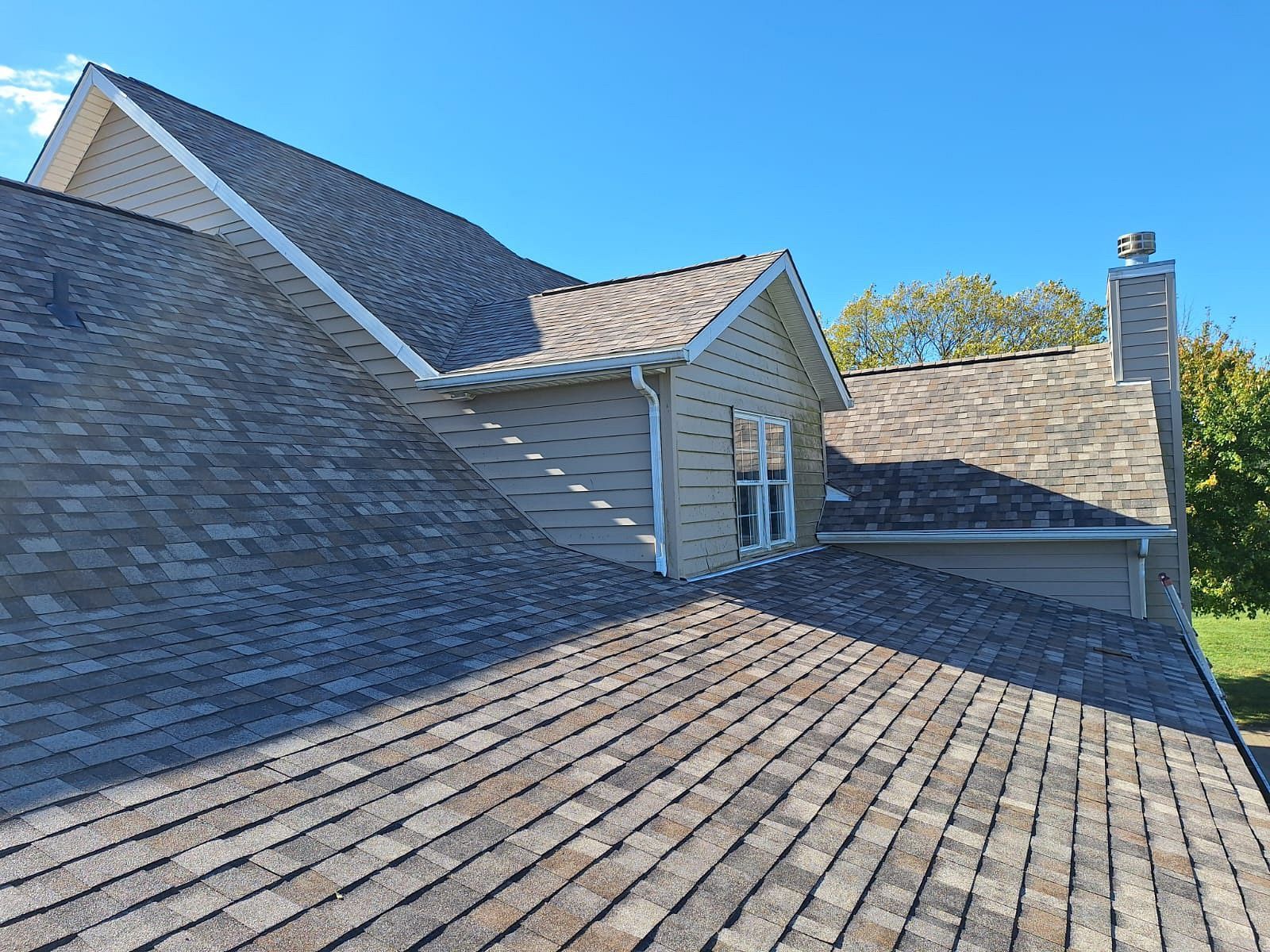
By Allstate Exteriors – Your Local Roofing Experts When winter hits Columbus, your roof takes on the full force of snow, ice, and freezing rain. If your roof isn’t ready, small problems can quickly turn into leaks, water damage, or costly repairs. Taking a few simple steps now can protect your home all season long. 1. Schedule a Roof Inspection Before the cold weather arrives, schedule a professional roof inspection in Columbus, Ohio . At Allstate Exteriors, our experts check for: Missing or cracked shingles Soft or damaged decking Loose flashing or exposed nail heads Signs of leaks or water intrusion Fixing these issues early helps your roof last longer and keeps your home safe through the winter. 2. Clean Your Gutters and Downspouts Leaves and debris in your gutters can block water flow. When snow melts, this can cause ice dams — one of the biggest winter roofing problems in Ohio. ✅ Clear gutters before the first freeze ✅ Make sure downspouts are open and draining properly ✅ Consider adding gutter guards for long-term protection 3. Trim Back Tree Branches Branches that hang over your roof can snap under the weight of snow or ice. Trimming them now prevents damage to your shingles and gutters later. 4. Check Attic Insulation and Ventilation A warm attic can melt snow on your roof, which then refreezes at the edges and forms ice dams. Good ventilation and insulation help keep attic temperatures even — protecting your roof and lowering energy costs. If you’re not sure what condition your attic is in, Allstate Exteriors can inspect it for you. 5. Seal Flashing and Roof Penetrations Water often sneaks in around chimneys, vents, and skylights. Before winter, check the sealant and flashing around these areas. Resealing them now prevents leaks when temperatures start to fluctuate. 6. Watch for Flat or Low-Slope Roofs If your home or garage has a flat or low-slope roof, make sure drains are clear and no areas are sagging. Heavy snow can cause ponding water, leaks, or even collapse if not maintained properly. Stay Protected All Winter Long Your roof is your home’s first line of defense against Ohio’s winter weather. At Allstate Exteriors, we’ve helped homeowners in Columbus and throughout Central Ohio stay protected for over 20 years. As an Owens Corning Platinum Preferred Contractor with an A+ BBB rating , we take pride in doing things the right way — every time. SCHEDULE YOUR FREE ESTIMATE!
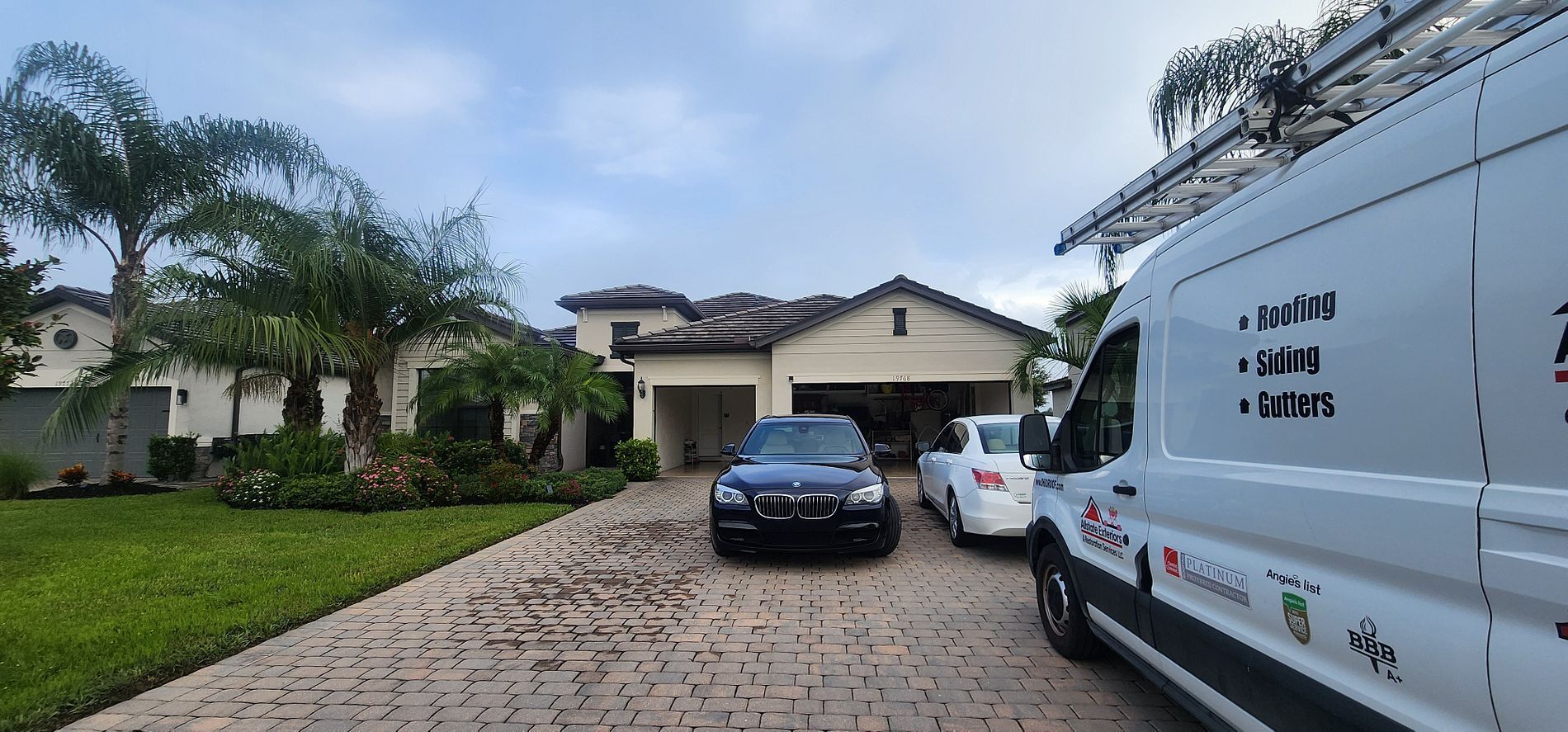
Florida weather doesn’t mess around - one week it’s blazing hot, the next it’s pouring rain, and by the weekend, the wind’s trying to take your patio furniture. Through it all, your roof takes the biggest hit. That’s why regular roof inspections are one of the smartest things a homeowner can do. At Allstate Exteriors , we treat every inspection like it’s our own home up there. We know how unpredictable Florida weather can be, and we’ve seen firsthand how fast small issues can turn into expensive headaches if they go unnoticed. Here’s what we look for every single time we’re on your roof in Orlando (and why it matters). 1. Shingles or Tile Condition Your roof’s surface is the first thing we check. We look for cracked, lifted, or missing shingles, and for tile roofs, we check for chips and hairline fractures that can lead to leaks later. Florida’s combination of strong UV rays and heavy rain can wear down roofing materials faster than most homeowners realize. Even something that looks “minor” can open the door for water intrusion which leads to rot, mold, and insulation damage. If it’s not sealed tight, we’ll find it. 2. Flashing and Sealant Flashing is that thin layer of metal around your vents, chimneys, and skylights - basically the unsung hero of your roof. We check for cracks, rust, or gaps in the sealant that could let water sneak in. Florida’s heat can cause the caulking to dry out and crumble, so keeping these areas watertight is key to preventing leaks. 3. Underlayment and Decking Think of your underlayment as your roof’s invisible armor. It sits beneath the shingles to protect your home from leaks. We check for soft spots, wrinkles, and signs of trapped moisture. If we see anything that feels spongy underfoot or looks discolored, that’s a sign the decking might be compromised. Catching that early can save you thousands. 4. Gutters and Drainage Florida rainstorms are no joke and when gutters are clogged or sagging, that water has nowhere to go. We make sure your drainage system is doing its job by checking that gutters are clear, pitched correctly, and attached securely. Proper drainage helps prevent rot, mold, and premature roof aging. 5. Attic Ventilation and Insulation A lot of roof problems actually start in the attic. During your inspection, we look for signs of poor ventilation like damp insulation, musty smells, or heat buildup. Good ventilation helps extend your roof’s lifespan and keeps your energy bills in check (which every Florida homeowner can appreciate). 6. Storm or Wind Damage After hurricane season or even a strong thunderstorm, we often find loose shingles, missing granules, and debris damage that isn’t obvious from the ground. Our team documents everything with photos so you can see exactly what we see — and if an insurance claim is needed, you’ll already have clear proof. When Should You Schedule a Roof Inspection? A good rule of thumb: once a year for maintenance, and after any major storm. You should also schedule an inspection if you’re buying or selling a home, or if you’ve noticed leaks, stains, or missing shingles. Florida weather can be unpredictable, but roof damage doesn’t have to catch you off guard. Staying ahead of it with regular inspections gives you peace of mind — and helps you avoid those “uh-oh” moments when the next storm rolls through. ⭐️ Why Homeowners in Orlando Trust Allstate Exteriors ⭐️ We’re not just a roofing company: we’re your neighbors, and we truly care about keeping your home protected. As an Owens Corning Platinum Preferred Contractor , we hold ourselves to higher standards than most. Our inspections are detailed, honest, and never pushy. When you call us, you’ll get: ✅ A thorough, photo-documented report ✅ A licensed and insured roofing professional ✅ Local expertise in Florida codes and storm regulations ✅ Transparent, straightforward communication We’ve helped homeowners all across Orlando , Palm Bay , Cape Coral , and surrounding areas keep their homes safe and dry. ☀️ Book Your Roof Inspection Today If it’s been a while since your roof was checked or if you’re just not sure what shape it’s in - let’s get you scheduled. Roof inspections in Florida aren’t just about catching problems; they’re about protecting your investment and your peace of mind. Give us a call today at 321-300-0378 or click here to schedule your free roof inspection.

